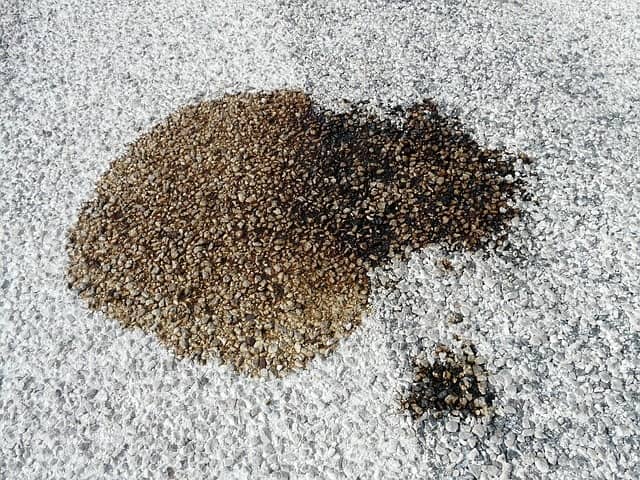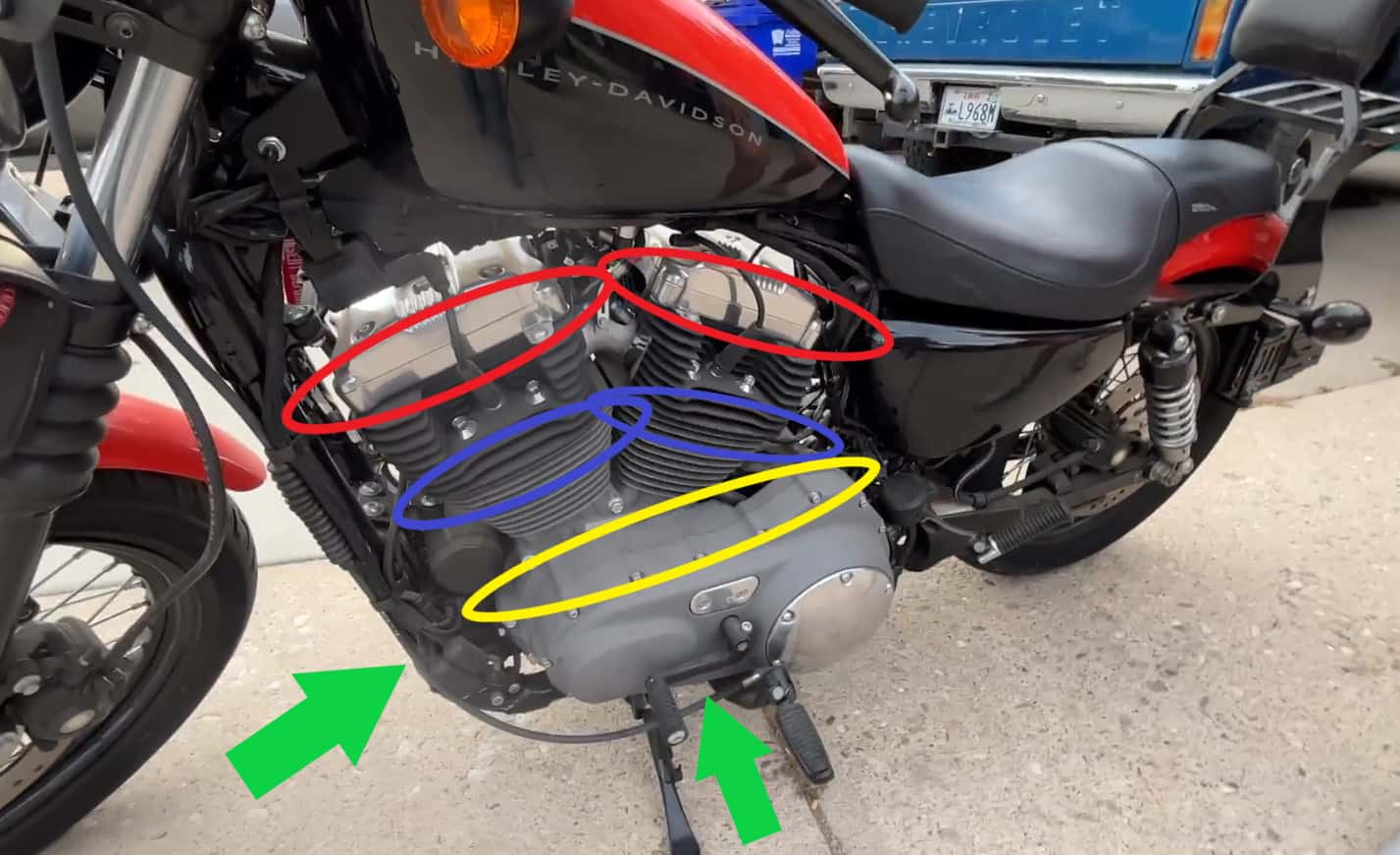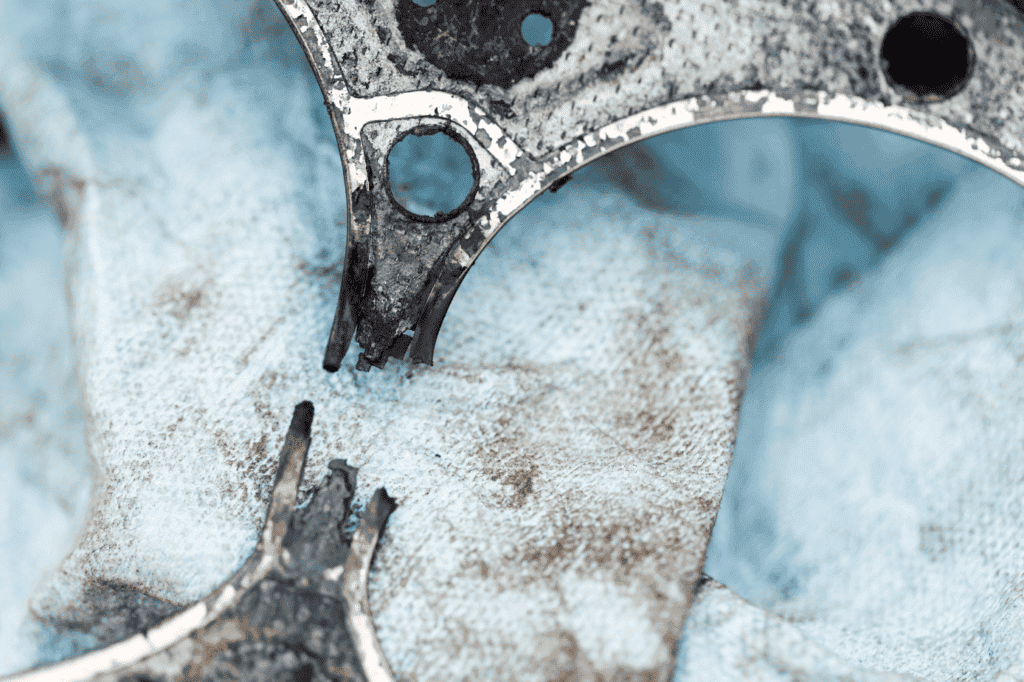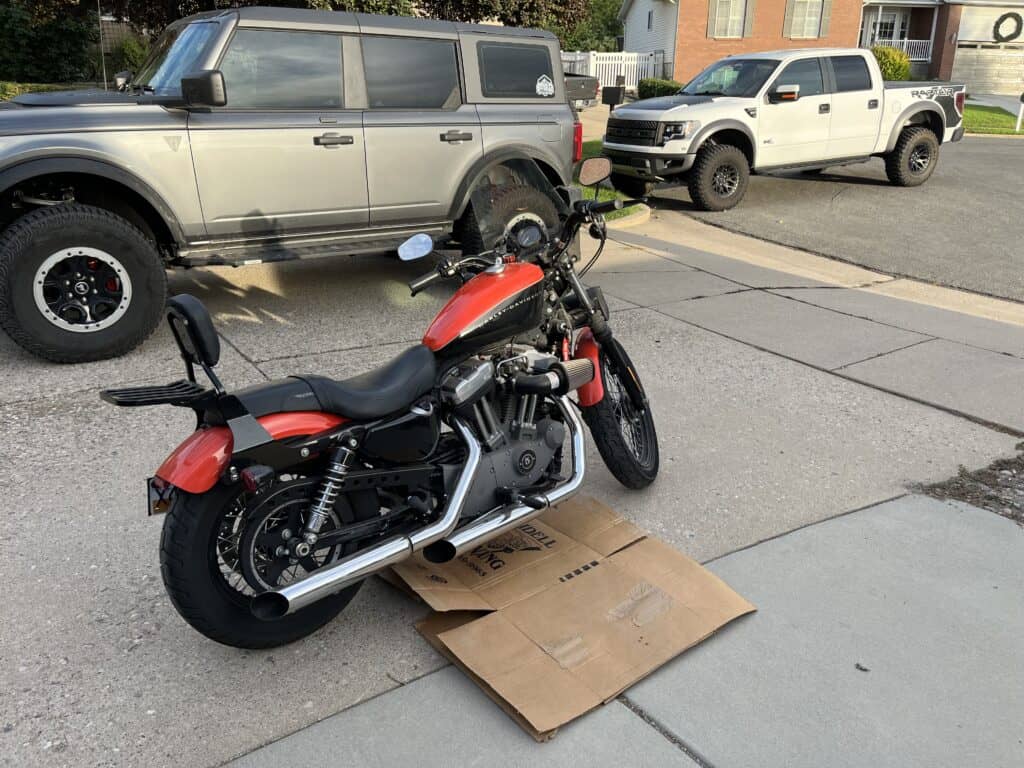
Though motorcycles are simpler machines, there are a few things about them that can leave us owners scratching our heads. One of those things may include engine oil leaks.
Motorcycle engine oil leaks can be a bit scary and mysterious because the underlying problem could be multiple things. Oil leaks are somewhat common among motorcycles.
So why is my motorcycle leaking oil? One of the most common reasons why a motorcycle leaks oil is due to faulty gaskets found on the oil pan, valve cover, crankcase, or the cylinder head of the engine. The second most common reason a motorcycle leaks oil is from faulty plugs such as the oil drain plug, crankcase side plugs, and valve cover plugs.
I have owned over a dozen motorcycles and experienced many oil leaks with most of them. Through my experience and my knowledge as an engineer, I can clearly explain how the leaks happen and how to stop/prevent them from happening in the future.
Why A Motorcycle Leaks Oil
Oil leaks can be messy and they can be annoying. It’s embarrassing parking a leaking motorcycle in a public place only to find that there’s a nice little puddle underneath it.
You’re not alone if you’re frustrated with your motorcycle leak. It happens to most of us motorcycle owners, even the ones who take good care of their vehicles.
The first main reason why motorcycles leak oil is because of faulty gaskets on the engine. The main gaskets that end up leaking are the oil pan gasket, valve cover gasket, crankcase gasket, and cylinder head gasket. These are the four most common gaskets to leak in a motorcycle engine because they see the highest internal pressure and oil can push out between those meeting surfaces if they aren’t doing their job.

I’ll use the picture above as a better visual reference. The oil pan gasket is located underneath the engine (green arrows), the valve cover gasket is located on the top of the engine (red circles), the crankcase gasket is located on the side of the engine (yellow circle), and the cylinder head gasket is located in the mid level of the engine fins (blue circles). Motorcycle gasket locations will vary slightly, but you can look in these general areas of your motorcycle to find the main gaskets.
It is inevitable for gaskets to, at some point, shrink and crack and become less effective at their job. With the constant pressure on them, oil is pushed out of the weak spots on the gaskets which causes a leak.

People don’t realize that leaving a motorcycle dormant for long periods of time can have a negative impact on gaskets. When a motorcycle is used regularly, the gaskets are heated up and expanded. In other words, the gaskets are “exercised” and last a lot longer when they’re used. When they remain dormant, the aging process is expedited and they become brittle a lot quicker. See our other article here to learn more about what happens when your motorcycle sits for a long time.
The second main reason why motorcycles leak oil is because of faulty oil plugs. The most common plugs that leak is the oil drain plug on the bottom of the oil drain pan, side crankcase plugs, and the valve cover plug.
The oil drain plug is an obvious culprit to oil leaks. Sometimes motorcyclists can scrape the bottom of their motorcycle on a curb or speed bump which can harm that drain plug.
Many times there are plugs on the side of the crankcase to check the timing, clutch, stator, or other things. Not all motorcycles have these, but if yours does it could be the possible culprit for a leak. There are also usually plugs on the valve cover so owners or mechanics can easily adjust the valve lap. These can often be a culprit to oil leaks as well.
The main reason oil plugs leak is because they aren’t on tight enough. The vibrations of the motorcycle can sometimes cause them to come a bit lose, so make sure they’re tight. There are also o-rings on the plugs that can become brittle and ineffective just like the gaskets can. If those aren’t working right, oil can easily leak. Occasionally, the plugs may not be threaded right which decreases the tight seals needed to keep the oil in.
See our YouTube video here for a better visual on why your motorcycle is leaking oil.
How To Fix Oil Leaks
You may have found yourself with an oil leak on your motorcycle and wonder if you’re going to have to pay hundreds of dollars to fix it. Luckily, most oil leak issues can be fixed by anyone who is willing to learn that have a few basic tools.
Oil drain plugs are pretty easy to fix. You’ll need to find the replacement drain plugs either at an auto parts store or online. Check your owner’s manual or research online to make sure you purchase the right plugs. This is something that can be done in a matter of fifteen minutes in the comfort of your garage.
Most of these gaskets we’ve discussed can also be changed in your garage. For valve cover gaskets, you just need to remove a few bolts and you may have to remove your gas tank (which is also pretty simple).
The crankcase and oil pan gaskets can also be done easily. Be sure you find instructions online or in your owner’s manual to make sure you do it correctly specific to the type of motorcycle you have.
The cylinder head gasket is one gasket I recommend you do not fix yourself. This requires that the top part of your engine is taken apart which will expose the pistons and other vital parts of the engine that an inexperienced owner should not be handling. Doing anything wrong in a fix like this could ultimately blow your engine.
While looking at the instructions of how to replace the gaskets, some of the instructions will recommend you also use RTV on one or both sides of the gaskets. RTV is a gasket sealer and provides triple protection on your engine and will reduce the chances of oil leaks later on.
A lot of places say that all you need to do to fix an oil leak it to use oil with certain additives. While this may be a temporary band-aid, I don’t recommend you do this because this is simply ignoring an underlying problem.
How To Prevent Oil Leaks From Happening
I hope you don’t feel doomed that you will forever have to deal with oil leaks and be constantly fixing them on your motorcycle while you own it. While leaks happen, there are several things you can do to prevent them from happening or to keep them from getting worse.
The first and best thing you can do to prevent motorcycle oil leaks is to regularly ride your motorcycle. That’s simple enough, right? I mean, you probably got your motorcycle for this very reason.
As I had mentioned before, when the gaskets inside the engine are being “exercised” and used, they last much longer. Think of this compared to a rubber band. If you just let it sit in one place and not use it for a while, it eventually becomes brittle and will snap once you do try to use it. But the more you use it, the longer it lasts. Gaskets are the same way.
Regular oil changes are also essential. Keeping in old oil with potential corrosive elements inside isn’t good for your engine and it isn’t good for the gaskets either. Though most oil has additives in it to prevent it from becoming acidic, those additives dissipate over time and the oil does become acidic. The acidity that builds up in oil can potentially eat away at the gaskets. Regular oil changes will prevent that from happening.
It’s also a good idea to occasionally inspect your motorcycle engine after taking it for a long ride. Take a few minutes to walk around the motorcycle after your ride and look underneath for any oil spots or leaks that may be forming.
Sometimes there are small signs of the beginning of an oil leak. There may be some oil pooled up somewhere but will drain off or become unnoticeable after the motorcycle has cooled off, leaving you none the wiser about any oil leak issues. Inspecting it right after a long ride will get you to notice those leaks and address them much sooner than you would with the later obvious signs.
How To Tell Where Oil Leaks Are Coming From
Sometimes oil leaks on a motorcycle can be a little tricky because you don’t know exactly where the leak is coming from. And since there are multiple possible places for the leak to be, it can leave you even more confused.
There are a lot of fancy tools out there that mechanics use to help them quickly identify the exact location of oil leaks. But most of us don’t have tools like that laying around nor do most of us want to spend the money paying a mechanic to find it.

If you don’t know where the leak is coming from, first try placing a piece of cardboard directly underneath your motorcycle. Associate the drips with with where the gaskets are.

If that still doesn’t help you track down where the leak is coming from, try using the paper towel method. When the motorcycle is completely cooled down, wrap some paper towels tightly around the engine using some tape. This will take a little bit of time, but the leak will quickly manifest it’s exact location on the engine by soaking through the paper towel.
Related Questions
Why is my motorcycle leaking gas? Gas leaks from a motorcycle usually because a hose isn’t on tight, a gasket is worn, or a nut isn’t tight enough. The most common places a motorcycle leaks gas are the fuel petcock, the carburetor, holes in the gas tank, and the fuel injector. Click here to view my article that discusses this in more depth.
What will happen if I continue to ride my motorcycle with an oil leak? While occasional rides with an oil leak won’t cause any damage, consistently riding with a leak without addressing the issue could eventually cause the engine to seize because of the lack of oil inside the engine.

